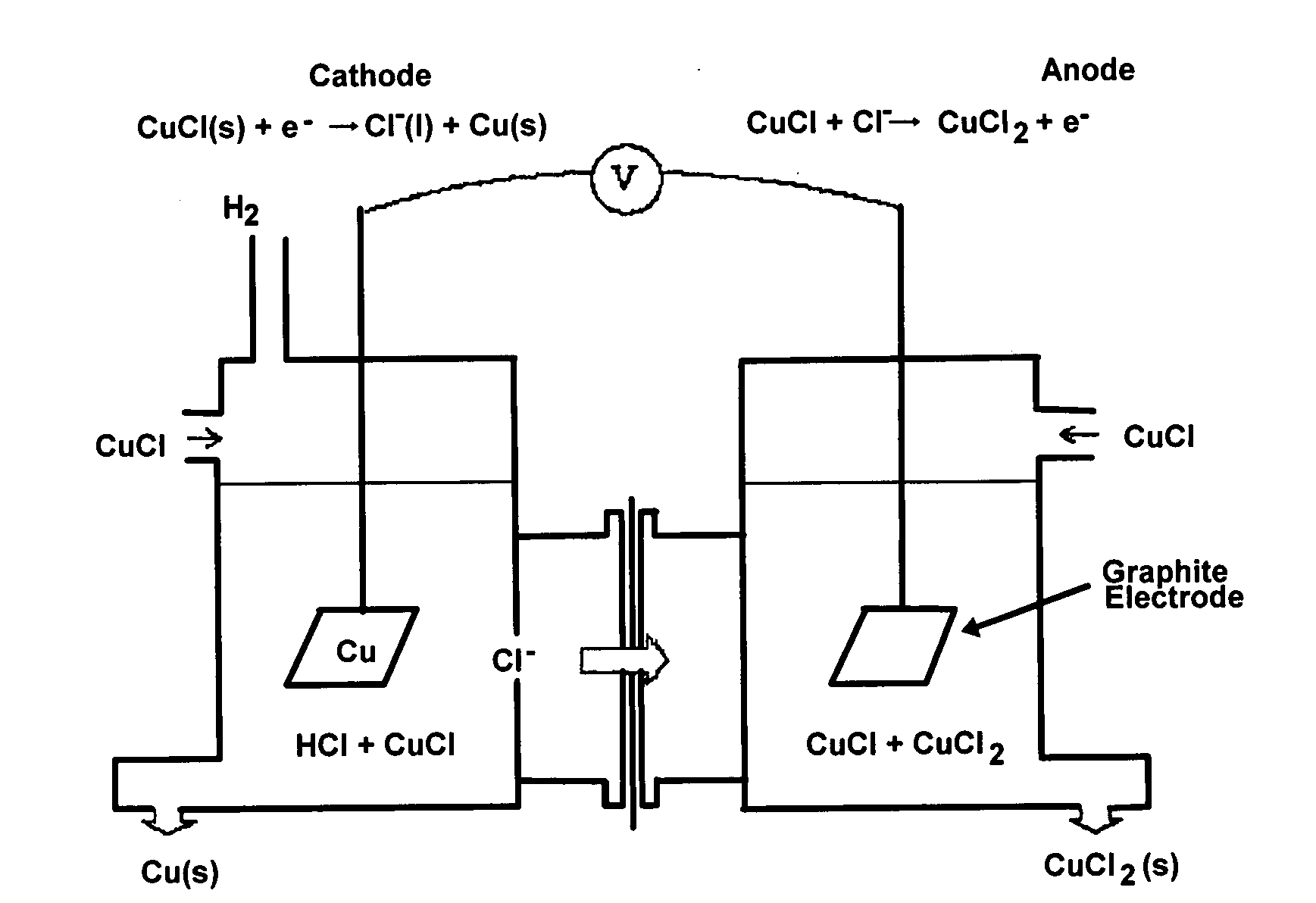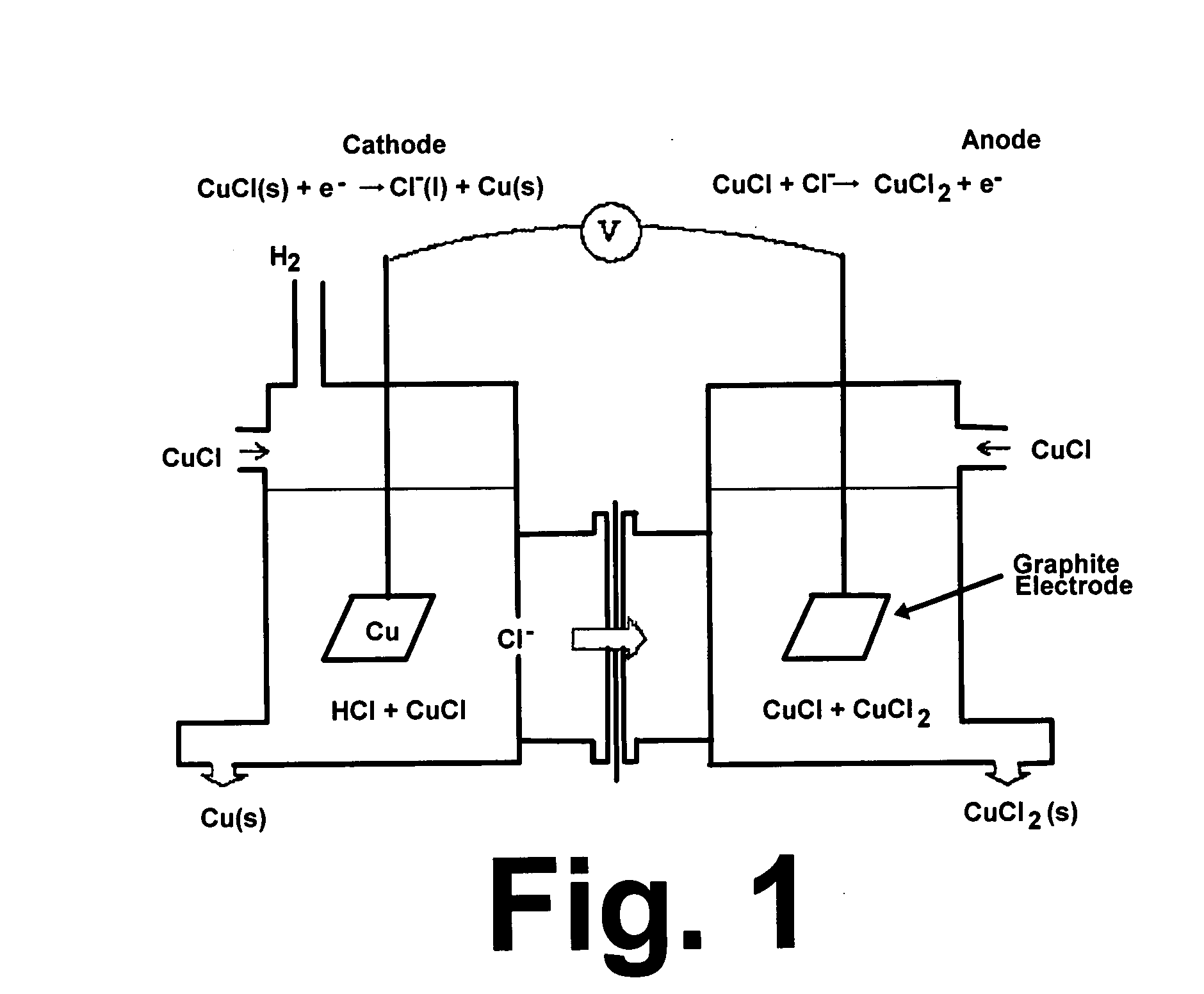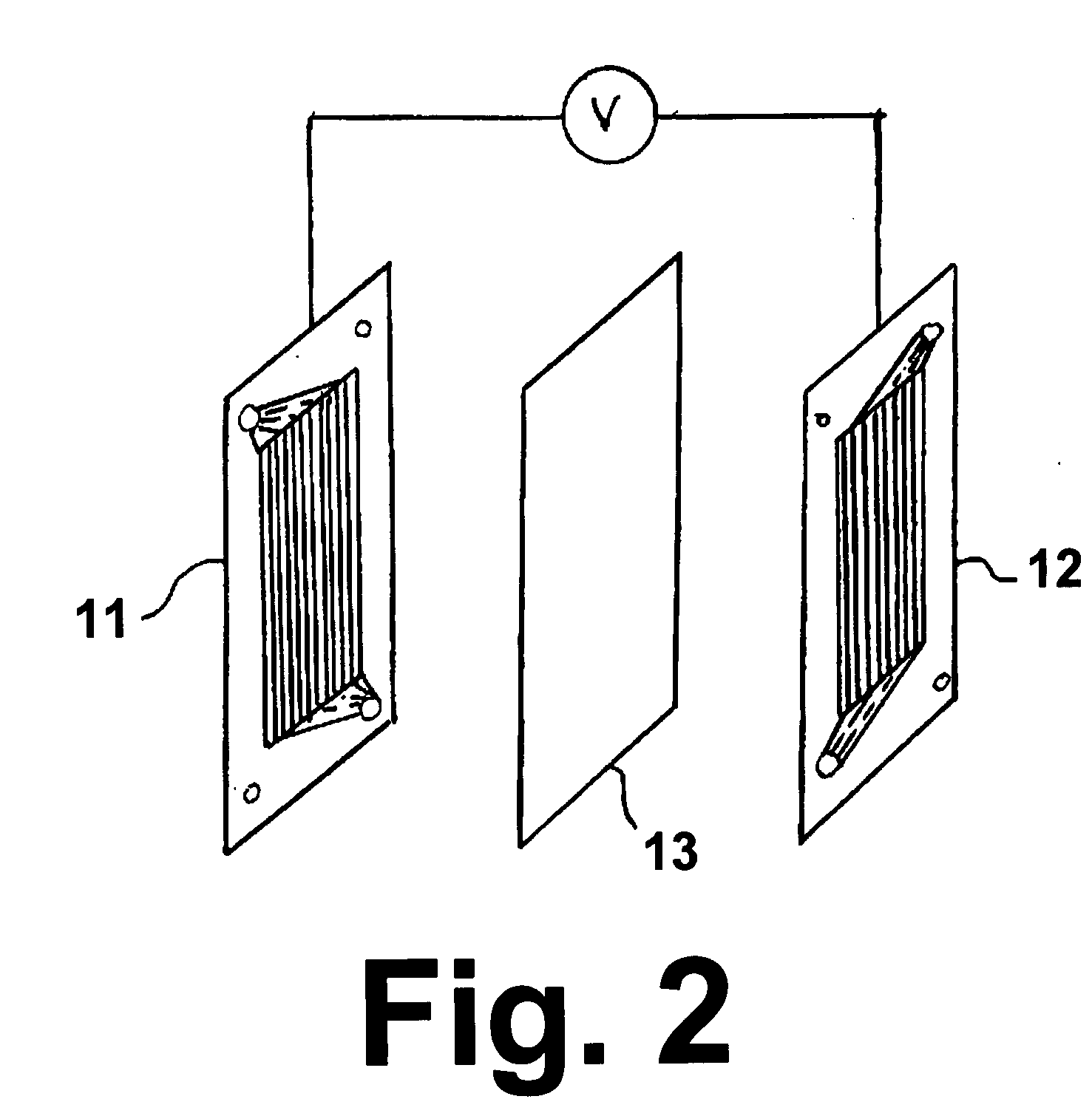CuC1 thermochemical cycle for hydrogen production
a thermochemical cycle and hydrogen production technology, applied in the direction of refrigeration components, electrodialysis, diaphragms, etc., can solve the problems of increasing reaction rate and current density, and achieve low corrosion rate, low cost of production, and reduced risk of shorting of cells
- Summary
- Abstract
- Description
- Claims
- Application Information
AI Technical Summary
Benefits of technology
Problems solved by technology
Method used
Image
Examples
example
[0022]In this example, an anion exchange membrane is prepared by blending two polymers in different ratios and then casting the membrane on a glass plate laminated with a TEFLON® substrate. The materials employed for this purpose, all of which are available from Aldrich Chemicals, include poly(ethylene vinyl alcohol), 32% ethylene, polyethylenimine, molecular weight 25000, 38% by weight glyoxal solution, methylsulfoxide, and CAB-O-SIL® silica. The details comprise making 10-weight percent solution of poly(ethylene vinyl alcohol) in methylsulfoxide (Solution A—10.0 g poly(ethylene vinyl alcohol) and 90.0 g methylsulfoxide) and 10 weight percent polyethylenimine in methylsulfoxide (Solution B—10.0 g polyethylenimine and 90.0 g methylsulfoxide). Although not required, warming the solutions to about 50° C. promotes rapid polymer dissolution. Thereafter, 80.0 grams of Solution A are mixed in a beaker with 20.0 grams of solution, stirring for about an hour so that they mix thoroughly. Aft...
PUM
| Property | Measurement | Unit |
|---|---|---|
| particle size | aaaaa | aaaaa |
| temperatures | aaaaa | aaaaa |
| solubility | aaaaa | aaaaa |
Abstract
Description
Claims
Application Information
 Login to View More
Login to View More - R&D
- Intellectual Property
- Life Sciences
- Materials
- Tech Scout
- Unparalleled Data Quality
- Higher Quality Content
- 60% Fewer Hallucinations
Browse by: Latest US Patents, China's latest patents, Technical Efficacy Thesaurus, Application Domain, Technology Topic, Popular Technical Reports.
© 2025 PatSnap. All rights reserved.Legal|Privacy policy|Modern Slavery Act Transparency Statement|Sitemap|About US| Contact US: help@patsnap.com



